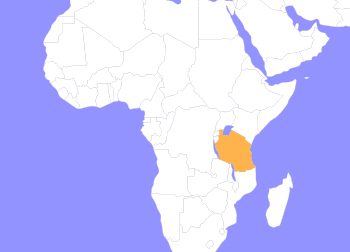Black Throated Monitor Lizard
Varanus albigularis microstictus
The Black Throated Monitor is one of three subspecies of the Rock Monitor. The other two monitors are the white-throated monitor and the Angolan white-throated monitor. They are found in Central, Eastern, and Southern Africa and are the second largest lizard in Africa. The largest is the Nile Monitor. Rock Monitors can grow up to 6 ft in length, including their tail. They tend to be mottled colors of white, grey, and yellow to match their native terrain. They have long, powerful tails that can be used like a whip to protect itself – they are generally longer than the body itself. They are the heaviest lizard in Africa, weighing anywhere between 10 to 40 lb, with males being heavier than females.
The group of lizards known as monitors got their name from their habit of standing up on their back legs to look around, or monitor, their surroundings. Despite their size, they are fairly good swimmers. They have large claws that can be used to dig or climb trees. They have several defense mechanisms, including biting, ejecting excrement, playing dead (with their eyes still open), and their tail as stated earlier.
They are not picky eaters and will eat anything from the size of a cat to insects. This includes amphibians, fish, and eggs. To get crocodile eggs, they have been shown to use teamwork – one distracts while the other grabs the eggs.
Say Hello To Cub Creek's Monitor Lizard: Vulture
Vulture came to this camp as a baby many years ago. He grew up in the same enclosure as Tang, the Green Iguana we had at the time, and learned some quirky behavior from that (like eating reptile salad even though he’s a carnivore. He loves sunbathing and napping all day, but his favorite days are the warm ones where we take him outside on a harness and go for a walk.

Black Throated Monitors are native to Africa, ranging across the east African country of Tanzania.
HABITAT -Arid, semi-deserts, savannah, bushy, and forested areas are where they are found.
DIET -They are carnivorous and will eat snails, insects, carrion, and baby tortoises.
FUN FACT -Rock monitors have been shown to be able to count to six in some experiments.
SOCIAL BEHAVIOR -They are solitary animals but docile with humans when captive.
ACTIVITY -They are diurnal and go semi-dormant during the winter season.
PREDATORS -Main predators are the Martial Eagle and Honey Badger.
SIZE -Can grow to be 6 ft in length (including tail) and weigh close to 40 lbs.
RELATIVES -The Varanus genus contains many other species of monitors, including the Komodo Dragon.
CONSERVATION -They are not evaluated by the IUCN.
Cub Creek Animal Care Information
Housing - Vulture is housed in our Habitats room with his own spacious enclosure to explore. He has a multi-layer enclosure. The bottom is covered in shavings to give him traction as he walks while the top provides a window for him to look out and a basking spot. He always has access to fresh water and gets misted occasionally.
Diet - Our lizards are fed on a reptile specific schedule, meaning they are fed Monday, Tuesday, Thursday, and Saturday. Reptiles have slow metabolisms and do not require to be fed everyday if they are fed adequately. We switch between feeding Vulture a frozen mouse or dog food. We also give him eggs on occasion as a treat.
Enrichment - Being food motivated, Vulture’s favorite type of enrichment is puzzle boxes that make him have to search out his food. Our campers can use cardboard to create these. When the temperatures are warm, we put Vulture on a harness and take him for a walk outside – just like a dog!


